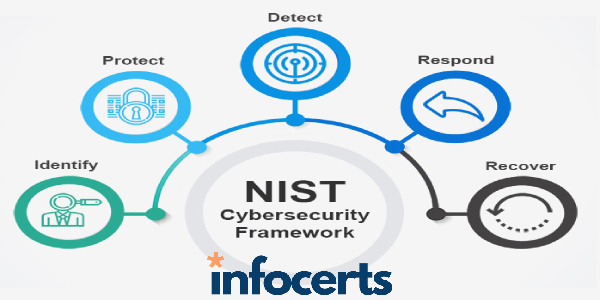Regular cyber-attacks and the misuse of stolen data have become the norm, forcing people and by extension, companies that use the data to invest significantly in network security and data management. Many data breaches and network outages occur daily due to software vulnerabilities or cyber-attacks. The trend of network compromises and data thefts has increased exponentially over the years.
According to the United Nations, cybercrime has increased
600% during COVID-19. An
IBM report estimates the worldwide average cost of a data breach at $3.86 million per breach.
Let’s get a better understanding of the importance of cyber security testing in securing networks and preventing data breaches.
What is security testing?
Security experts perform real-world attacks on your network during
penetration testing to identify vulnerabilities and assess the overall risk to your network’s security. The concept behind penetration testing is that cybersecurity experts (whether given information about your security or not) use the same methods as cybercriminals to find network vulnerabilities, exploit them, and move throughout the system. It goes beyond a simple vulnerability report because it involves the good guys pretending to be the bad guys to expose your network security flaws and employee training weaknesses.
Posing as a hacker enables the company to identify security risks, remove false positives, and add a manual component to the test. These tests have a tremendous impact on an organization, from compliance and risk assessments to increased security awareness.
Penetration testing stages
Penetration testing can be broken into 9 stages. Here is the overview of each stage:
Stage 1: Information gathering
In this stage, the test engineer learns everything about your company and its employees from the external world through research. The team uses the same resources a bad guy would use to attack your networks, such as your company website, applications and workers’ social media.
Stage 2: Enumeration & identification
The testers, in this stage, examine your network for vulnerable, open ports, services and applications.
Stage 3: Vulnerability scanning
It is the final stage in the research and preparation process, during which they test both manually and automatically to identify network vulnerabilities.
Stage 4: Attack surface analysis
At this stage, the tester compiles all their preparation and determines the best attack method, including exploiting network vulnerabilities, leading to the creation of an attack plan.
Stage 5: Penetration & exploitation
The plan is put into action in this stage, to compromise and exploit the vulnerabilities in the network.
Stage 6: Privilege escalation
The next step is to gain domain admin access. The team will search the network for ways to gain administrative access.
Stage 7: Create persistence
This stage’s goal is to ensure the network’s long-term persistence. Typically, the test engineer may establish a backup, personal login with admin access to the system.
Stage 8: Pivot
After establishing persistence and moving throughout the network to access, the tester would need new data. It helps the tester find the information hackers need to achieve their goals.
Stage 9: End goal
After all the preparation and network movement, the QA experts finally reach the goal to breach an intellectual property, sensitive information or financial accounts.
How to conduct network penetration testing?
Network penetration testing is executed through three common methods mentioned below:
Black box
Black box testing is leveraged with no previous knowledge of the network’s operation or technical characteristics. As a result, the test works by performing a targeted attack after thoroughly exploring the given network.
Businesses that manage sensitive data and wish to keep an eye on all potential security holes can use this realistic cyber-attack version.
Gray box
A ‘gray box’ test has the same function as a black-and-white test. Stolen login knowledge enables unauthorized access to internal information such as user privileges and technical documents in an average system.
It is one of the most common network pentests which is done for highly targeted attacks framed to understand the attack direction of an average hacker.
White box
Network specialists gather data about the system, identify potential weaknesses, and target the specific infrastructure to evoke a response. If black is realistic and gray is moderately intrusive, the ‘white box’ test is like an audit that checks the impacts of increased security.
Finally, companies employ this kind of a last run-through to ensure that their system is impenetrable to even the most hardcore hacker.
Types of Penetration Testing
Majorly, there are two types of penetration testing:
Network testing
Finding security flaws and vulnerabilities in a network’s infrastructure is the primary goal of a pen test. After conducting extensive research, a tester performs several network tests. It’s critical to conduct these network tests locally and remotely to gather as much data as possible.
Social engineering
Cyber ciminal’s psychological tricks often lead to successful breaches (95% of successful attacks are spear phishing). A pen test should therefore use similar strategies. This form of pen test entails the testing of company employees.
Types of social engineering
Social engineering can be classified into following types:
Remote testing
Testers use electronic means, such as spear-phishing, to trick an employee into compromising network information or credentials.
Physical testing
Test engineers leverage direct employee contact to find and retrieve sensitive data. Many testers may impersonate people over the phone or in-person to find unlocked computers or potential security flaws.
Client-side tests
This includes testing of web browsers, content creation software, and other applications. These tests find application security flaws locally. For example, a cyber criminal can easily exploit a missing application update or patch to further their attack.
Web application
This test looks for web-based application security flaws beyond the client network and devices. This type of test is extremely complex to perform correctly, and it can take a long time to test each web application in use thoroughly.
Wireless network
A wireless network test examines a company’s wireless devices. It involves accessing devices like smartphones, tablets, and laptops to look for vulnerabilities. It also searches for flaws in the wireless access points and wireless protocol, looking for ways to exploit the devices and the overall network.
Conclusion
In today’s interconnected world, it is critical to protect your network. However, what if your team lacks the resources or expertise to conduct network security testing effectively? In such a scenario, you can take the help of
quality assurance services that can help you to implement network vulnerability analysis and eliminate your external network’s security weaknesses systematically.






